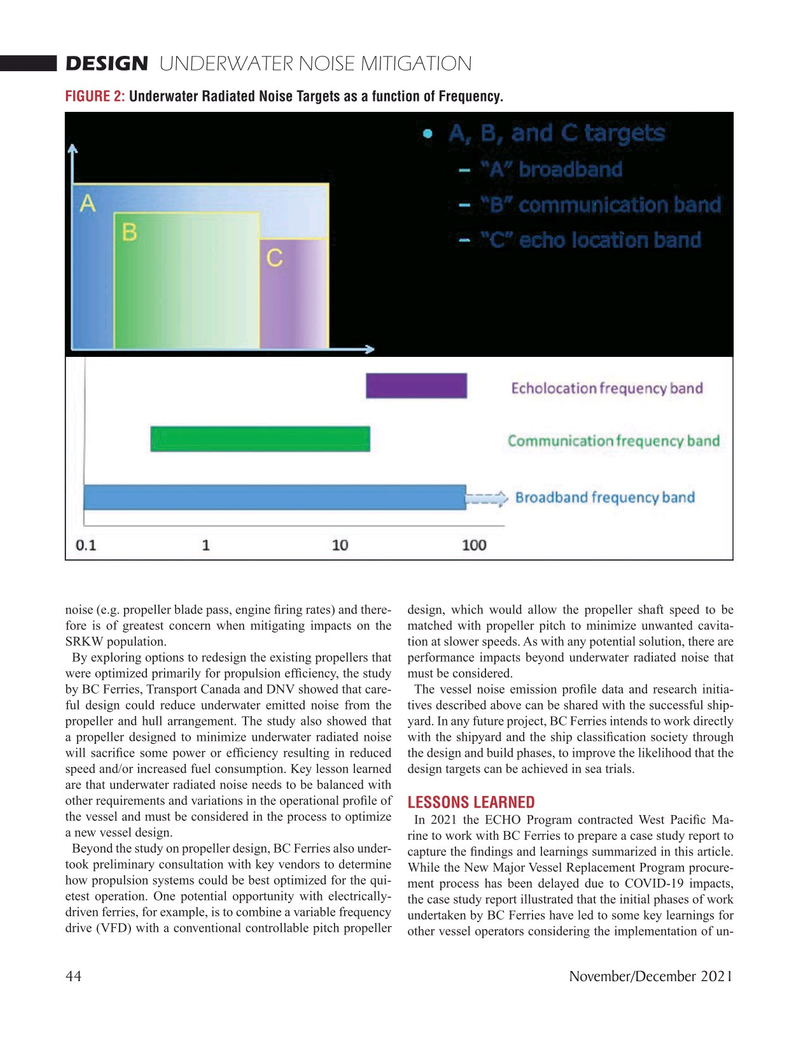
Page 44: of Marine Technology Magazine (November 2021)
Ocean Observation: Gliders, Buoys & Sub-Surface Networks
Read this page in Pdf, Flash or Html5 edition of November 2021 Marine Technology Magazine
DESIGN UNDERWATER NOISE MITIGATION
FIGURE 2: Underwater Radiated Noise Targets as a function of Frequency.
noise (e.g. propeller blade pass, engine ? ring rates) and there- design, which would allow the propeller shaft speed to be fore is of greatest concern when mitigating impacts on the matched with propeller pitch to minimize unwanted cavita-
SRKW population. tion at slower speeds. As with any potential solution, there are
By exploring options to redesign the existing propellers that performance impacts beyond underwater radiated noise that were optimized primarily for propulsion ef? ciency, the study must be considered.
by BC Ferries, Transport Canada and DNV showed that care- The vessel noise emission pro? le data and research initia- ful design could reduce underwater emitted noise from the tives described above can be shared with the successful ship- propeller and hull arrangement. The study also showed that yard. In any future project, BC Ferries intends to work directly a propeller designed to minimize underwater radiated noise with the shipyard and the ship classi? cation society through will sacri? ce some power or ef? ciency resulting in reduced the design and build phases, to improve the likelihood that the speed and/or increased fuel consumption. Key lesson learned design targets can be achieved in sea trials. are that underwater radiated noise needs to be balanced with other requirements and variations in the operational pro? le of
LESSONS LEARNED the vessel and must be considered in the process to optimize
In 2021 the ECHO Program contracted West Paci? c Ma- a new vessel design.
rine to work with BC Ferries to prepare a case study report to
Beyond the study on propeller design, BC Ferries also under- capture the ? ndings and learnings summarized in this article. took preliminary consultation with key vendors to determine While the New Major Vessel Replacement Program procure- how propulsion systems could be best optimized for the qui- ment process has been delayed due to COVID-19 impacts, etest operation. One potential opportunity with electrically- the case study report illustrated that the initial phases of work driven ferries, for example, is to combine a variable frequency undertaken by BC Ferries have led to some key learnings for drive (VFD) with a conventional controllable pitch propeller other vessel operators considering the implementation of un- 44 November/December 2021
MTR #8 (34-49).indd 44 11/22/2021 1:07:15 PM

 43
43

 45
45
